By Mary Sinanidis.
Stelios Okoumousis-Imvrios added “Imvrios” to his surname after leaving the Greek island of his heritage in 1966.
“I wanted the connection with Imvros,” he told The Greek Herald while pointing to a photograph of children from the village of Ai Theodorou on the north-Aegean island of Imvros dancing under the gaze of ANZAC soldiers.
The photo is one of 137 on display at The Imbros and Gallipoli Revealed exhibition at Parkdale’s Greek Orthodox Church in Victoria, organised by the Imvrians’ Society of Melbourne in collaboration with renowned historian Jim Claven. Printed on 21 boards, each board follows a theme to show life on the island when ANZACs were based there, near Gallipoli.

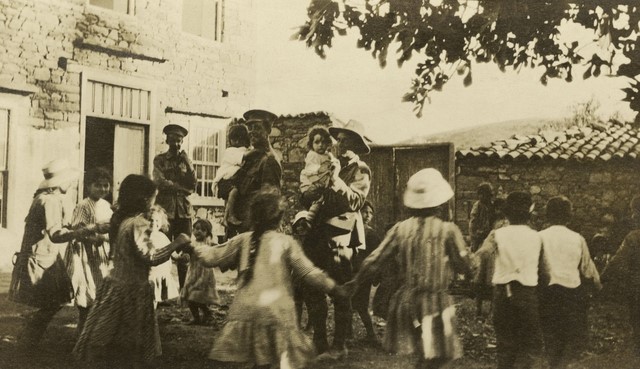
Uncovering an unknown story:
Kingston City Councillor Steve Staikos said: “These pictures tell a story we need to know more about. Through them, we uncover more things we may not have known. For example, the first Australian field bakery sent 14,500 (to 20,000) rations of bread every day on a trawler to troops based at Imvros. A lot of people don’t know the story. They have heard about Simpson and his donkey, but they haven’t heard about the bread that fed the soldiers and where it was baked.”
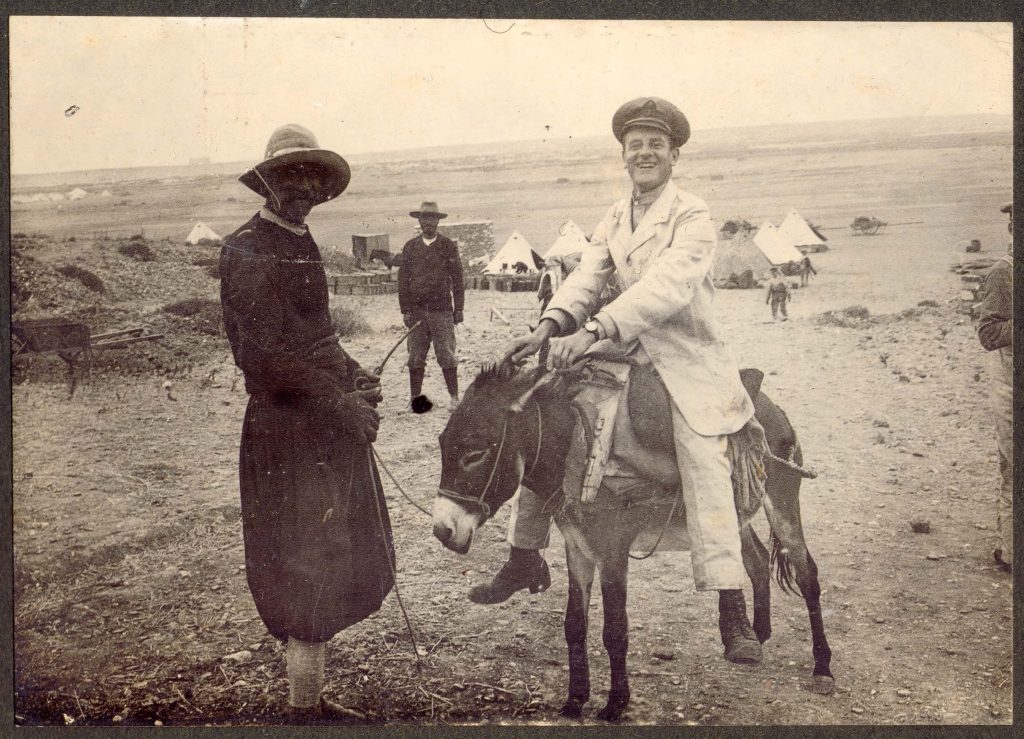
The bread was just one of the gifts of Imvros to the diggers, who wrote and spoke favourably of the island’s abundance of produce, including fresh eggs, meat, vegetables, figs, mulberries, citrus fruit, and fresh yoghurt described by soldiers as “life-giving stuff,” not to mention the spirits.
Some of the delicacies of the island were brought for guests to sample during the exhibition: traditional kourkouta (an Imvrian staple for the August 15 feast day of the Virgin Mary), amygdalota, special pumpkin boureki (strifto), baklava, dolmadakia, prasopita (leak pie) and manti.
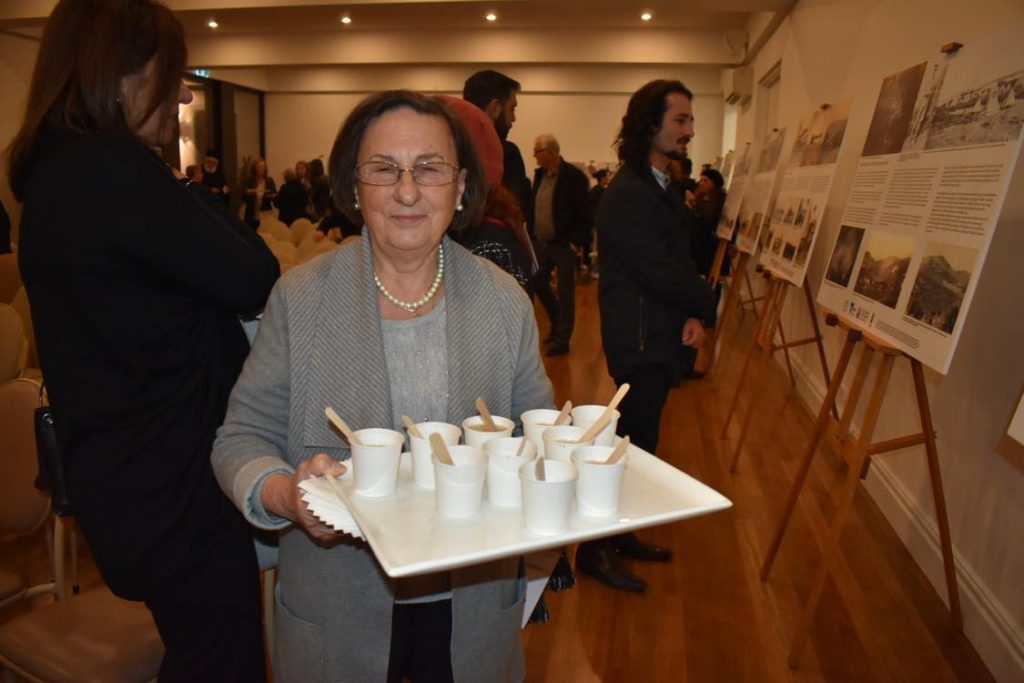

Mr Claven is no stranger to traditional Imvrian hospitality and cuisine from the island’s seven Greek villages. Having travelled to Imvros to tour the grounds where ANZACs walked during a visit in 2015, he began his preliminary research for his latest book, From Imbros over the sea: Imbros and Gallipoli revealed.
The island was the safest base close to the Peninsula, and the photographs show soldiers relaxing before dealing with the atrocities to come.

“They also reveal our island and its life,” George Xinos, a member of the Imvrians’ Society of Melbourne, said. “They show its people and the villages. We see children in the villages and towns, locals riding these new visitors on their donkeys. We see some of the religious life of the people, and we see some of the physical remains of Imvros’ long history in the great castle of Kastro.”
Many of the photographs show soldiers happily interacting with the locals or enjoying their hobbies, including a copy of a painting of Imvros as viewed from Gallipoli by Ann Holland’s grandfather. Ms Holland told The Greek Herald of how her grandfather, Alec Holland, never talked about the war but kept a diary while there.

“It was small enough to fit under his hat, and he wrote in it every day he was away. My father had it after he died, and then it came to me, and I decided to transcribe it before my aunt, his daughter, passed away at the age of 92,” Ms Holland said.
Her grandfather, an engineer in an elite unit handpicked to work with metals to build bridges for the Australian troops to cross, “wrote ordinary stuff in his diary”.
“Things like ‘today is windy’ or ‘today is the coldest day’,” Ms Holland said.

They passed through Imvros on their way to Souvla. But his unit was troublesome, and they mutinied when they weren’t paid. They were later disbanded.
Mr Claven contacted Ms Holland after she took to Facebook seeking soldiers who served in the same unit as her grandfather.
After the diggers left:
The photos and research tell the story of the role of Imvros during the war – a moment in time before the fate of the Greek community on the island was sealed, seven years later, with the 1923 Treaty of Lausanne.

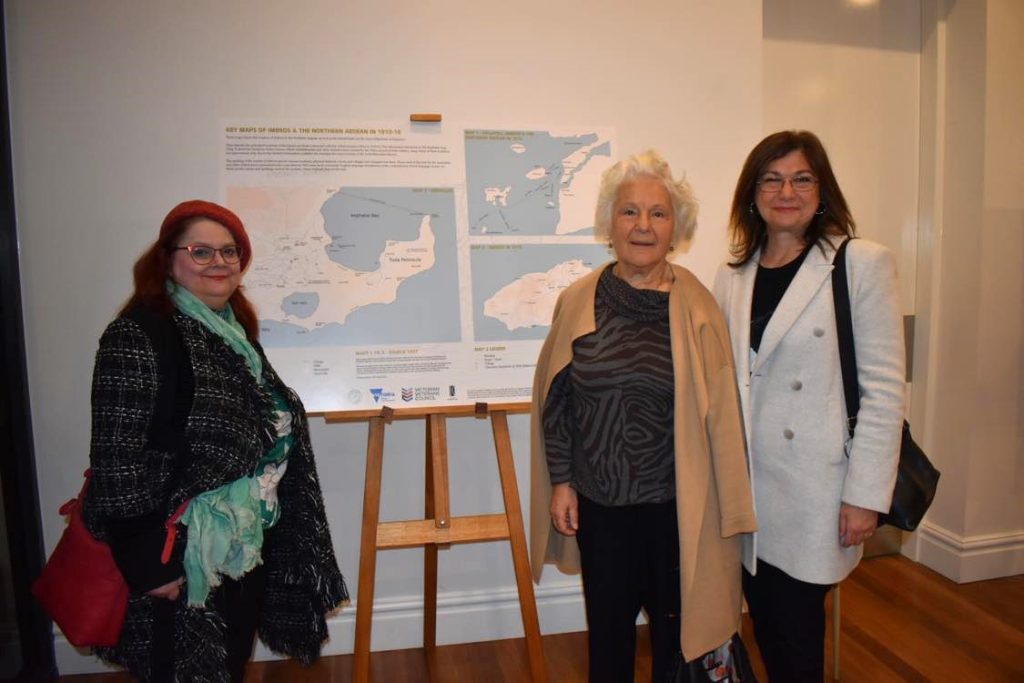
Legislating under the island’s Greek autonomy under Turkish rule, the Treaty left these Greeks with Turkish passports in limbo. Despite this, until the 1960s they managed to thrive however, due to a turn in the political climate, the population of almost 10,000 Greeks dwindled to 200 in the 1990s as many Imvrians abandoned their homes.
Mr Xinos said he prefers to look to the future.
“I think it is important to note that the Hellenic Community on Imvros is the only Hellenic community of Turkey that is growing. We were 200 people in the ‘90s, but now there are around 600,” he said.
“The Greek schools were closed half a century ago, but now they have opened again. We are thinking about the future and our continued presence there.”
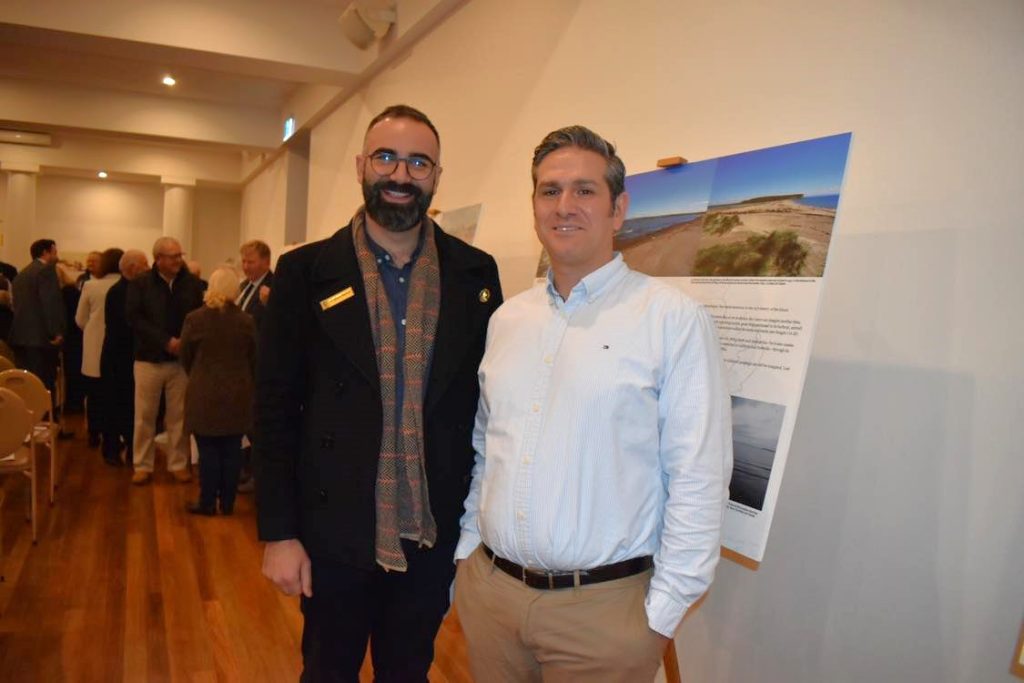
Plans are underway to build a commemorative trail on the island.
“A commemorative trail is being created in Lemnos, and it would be great to have that in Imvros, drawing some of the tens of thousands visiting Anzac Cove. This would boost tourism and increase general awareness for everyone on the island,” Mr Xinos said, adding that there are already plans for the display to travel around Melbourne and other places in Australia.
An exhibition on the island of Imvros is also being considered with the boards to be translated into other languages.
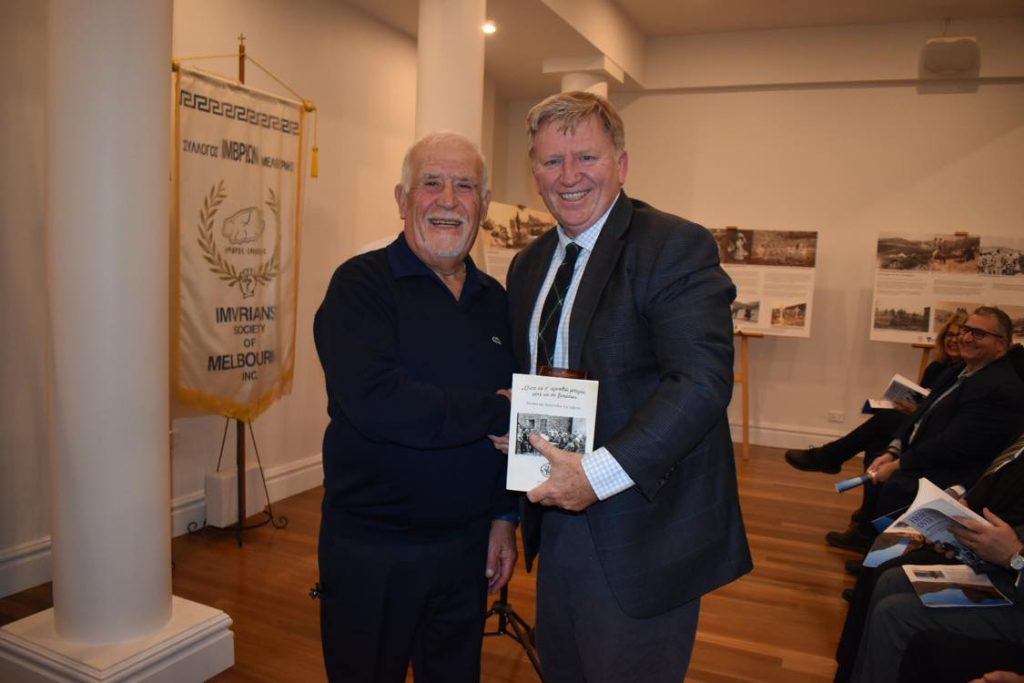
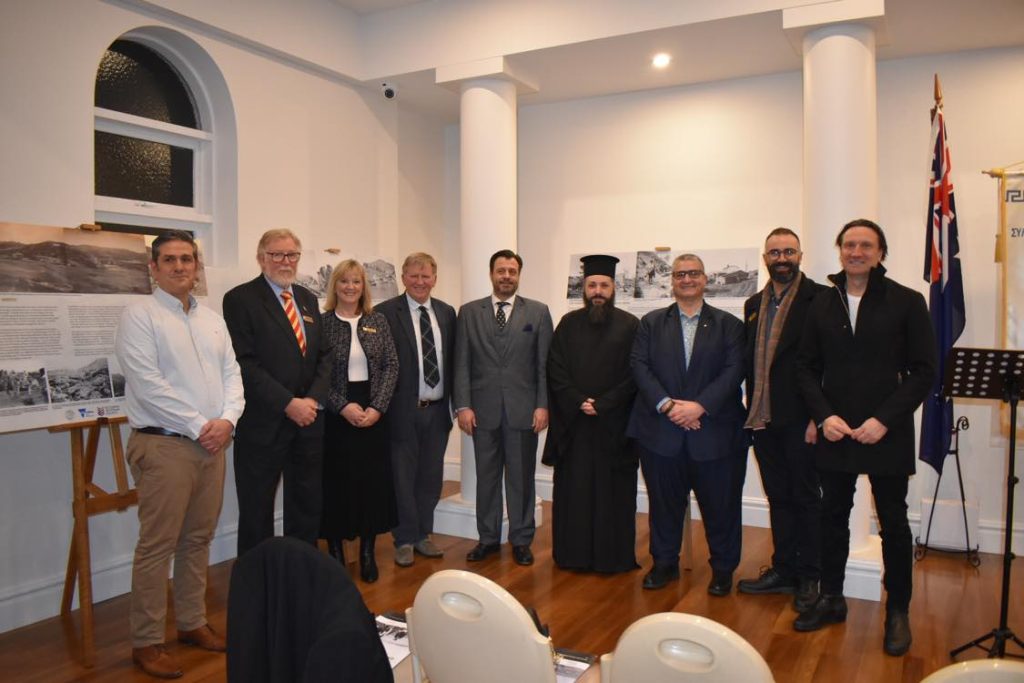
Bill Papastergiadis, President of the Greek Community of Melbourne (GCM), said the exhibition is important in casting the spotlight on a lesser-known part of the ANZAC story not taught in schools. He added that it is also an important part of Australia’s multicultural story.
“Largely our connection was one of migration, but that’s not the story as we know it,” he said.
“The story is complicated because it goes backwards and forwards. It’s not just us, people of Greek background making the story here, but also Australians making the journey to Greece and being part of our history.”

Mr Okoumousis-Imvrios said his grandfather, aged eight, fighting with the other village children to gather Australian coins and lollies could never have imagined that his family would thrive in the land of these diggers. He points to the next generation, his two granddaughters visiting the display, and proudly states that they are university students with dreams of someday working for NASA. They continue the story of 15,000 Imvrians scattered around the globe.
The opening of the exhibition took place on Friday, 2 June, and was officially opened by Lee Tarlamis MP for the Southen Metropolitan region, on behalf of Victoria’s Government and the Victorian Veterans’ Council, in the presence of Greek Consul General Emmanuel Kakavelakis. Visits to see the display can be arranged upon request and the book can also be ordered by emailing Georgexinos@gmail.com.
*All photos copyright The Greek Herald / Mary Sinanidis.


